Исторические корни и развитие обычаев - [121]
Un autre élément important des rites saisonniers est lié au rituel magique destiné à augmenter la récolte et à protéger le bétail.
Les rites et les croyances érotiques ont pour base l’idée de l’identité de la fécondité de la terre et de la femme et se rapprochent de la sorte aux rites dits «agricoles». Ici, l’essentiel c’est le souci élémentaire de la reproduction de l’homme.
Une place importante dans les rites saisonniers des peuples européens appartient aux rites solaires (considérant le soleil comme une force purificatrice et féconde). On у rapproche souvent les rites et les croyances liés au feu en tant qu’élément purificateur et apothropéïque. Les rites et les croyances liés à l’eau (force purificatrice et féconde) occuprent eux aussi une place de choix. Les rites et les croyances se rapportant à la végétation, aux symboles de la verdure en tant que renouveau printanier, ont une histoire plus compliquée. Chacun de ces éléments fait l’objet d’un article à part. Se basant sur les études des éthnographes et des folkioristes anciens et nouveaux, leurs auteurs tentent d’expliquer le contenu et les racines des phénomènes en question.
Des articles spéciaux sont consacrés aux autres éléments des fêtes rituelles tels que l’emploi des masques et toutes sortes de déguisements, la nourriture rituelle des fêtes, la coutume de faire des donations.
Il у a enfin un article portant sur le sujet même des coutumes et des rites. Est-ce qui fête? Qui participe à telle ou telle cérémonie, à tel ou tel rite? Comment la structure sociale se transforme-t-elle dans les gestes d’un coutume saisonnier? La cellule de base en a été, évidemment, une communauté de village (encore plus tôt, une communauté de tribu). Avec le temps, elle était progressivement remplacée par une communauté familiale. On a vu donc paraître une famille patriarchale (grande) ou une famille nucléaire (petite). D’où vient cet entrelancement des rites saisonniers avec la tradition familiale (se sont les noces, les rites funêbres, etc.). De nos jours on voit renaître cet esprit de rituel collectif, mais basée sur les rapports sociaux nouveaux.
This volume concludes the 4-volume publication of «Calendar Customs and Rites in — Europe Outside the USSR». The previous volumes were: «Winter Festivals», Moscow, Nauka, 1973; «Spring Festivals». Moscow, Nauka, 1976; «Summer and Autumn Festivals», Moscow, Nauka, 1978. This volume is based on the same information as the first three volumes. However, it differs considerably in structure and general content. In the first three volumes the information was grouped in seasonal cycles, and within each cycle the division was according to ethnic groups. The fourth volume is structured according to problems. It is based on chiefly the same European data, but in addition comparisons are made with peoples in other parts of the world.
This is a basic outline of the contents:
After the Preface which states the problems analyzed and the aim of the study there is an extensive historiographic review of various viewpoints and approaches to the study of folk customs and rites. The very concept of customs changes depending on the general state and level of development in the human area studies. On the whole enough a sufficient amount of factual information and theoretical understanding have been developed in this area. Also of an introductory character is an article on the historical development of the calendar system, on folk, civil and church calendars determining the rhythm of festivals and rites.
After this introductory material there is a study of individual components in calendar rites and customs. Each of these components is observed as they have developed from their historical sources. One of the most ancient elements of festive ritualism was, most likely, the practice of observing the «omens» and the practice of «divinations» of the weather, harvests etc. Such conjecture was probably based on the actual observation of weather phenomena.
Important components of the ritualistic calendar are magic rites related to agriculture and stock-breeding and intended to increase crop yields and herds.
Rituals of an erotic nature as based on the idea of likening the fertility of crops to that of women are closely adjoining to the agricultural rituals and superstitions. They expressed a basic concern for human reproduction.
The rituals and beliefs of a solar nature (the sun as a purifying and fruitful force) have left a tangible imprint on the ritualistic calendar of the people of Europe. Superstitions and rituals regarding fire, a purifying and apotropeic element, and rites, connected with water, also a purifying and fertile force, are very important, too. The superstitions and rituals related to vegetation, the symbol of greenery as the spring revival of nature, have a more complicated origin. Each of these components of the ritualistic calendar is discussed in separate articles. The authors, guided by the studies of earlier and current ethnologists and folklorists, strive to disclose the roots of the phenomena under discussion.
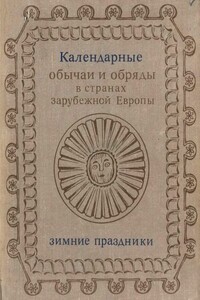
Настоящая книга — монографическое исследование, посвященное подробному описанию и разбору традиционных народных обрядов — праздников, которые проводятся в странах зарубежной Европы. Авторами показывается история возникновения обрядности и ее классовая сущность, прослеживается формирование обрядов с древнейших времен до первых десятилетий XX в., выявляются конкретные черты для каждого народа и общие для всего населения Европейского материка или региональных групп. В монографии дается научное обоснование возникновения и распространения обрядности среди народов зарубежной Европы.
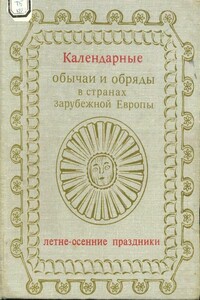
Монографическое исследование посвящено описанию и разбору традиционных народных обрядов, праздников, которые проводились и в настоящее время проводятся в странах зарубежной Европы, В книге показывается история возникновения и формирования обрядности, ее социальная сущность, выявляются конкретные черты для каждого народа и общие для всего населения Европейского материка или региональных групп.
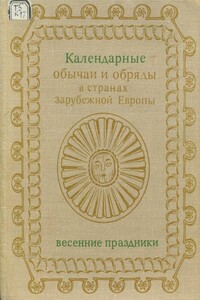
Книга представляет собой монографическое исследование, посвященное подробному описанию и разбору традиционных народных обрядов — праздников, которые проводятся в странах зарубежной Европы. Авторами показывается история возникновения обрядности и ее классовая сущность, прослеживается формирование обрядов с древнейших времен до первых десятилетий XX в. выявляются конкретные черты для каждого народа и общие для всего населения европейского материка или религиозных групп. В монографии дается научное обоснование возникновения и распространения обрядности среди народов зарубежной Европы.
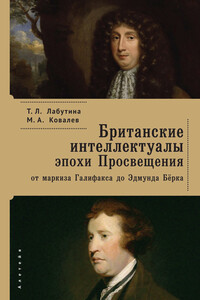
Кто такие интеллектуалы эпохи Просвещения? Какую роль они сыграли в создании концепции широко распространенной в современном мире, включая Россию, либеральной модели демократии? Какое участие принимали в политической борьбе партий тори и вигов? Почему в своих трудах они обличали коррупцию высокопоставленных чиновников и парламентариев, их некомпетентность и злоупотребление служебным положением, несовершенство избирательной системы? Какие реформы предлагали для оздоровления британского общества? Обо всем этом читатель узнает из серии очерков, посвященных жизни и творчеству литераторов XVIII века Д.
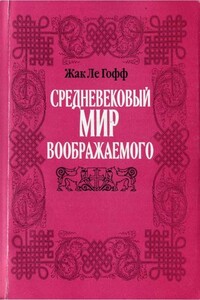
Мир воображаемого присутствует во всех обществах, во все эпохи, но временами, благодаря приписываемым ему свойствам, он приобретает особое звучание. Именно этот своеобразный, играющий неизмеримо важную роль мир воображаемого окружал мужчин и женщин средневекового Запада. Невидимая реальность была для них гораздо более достоверной и осязаемой, нежели та, которую они воспринимали с помощью органов чувств; они жили, погруженные в царство воображения, стремясь постичь внутренний смысл окружающего их мира, в котором, как утверждала Церковь, были зашифрованы адресованные им послания Господа, — разумеется, если только их значение не искажал Сатана. «Долгое» Средневековье, которое, по Жаку Ле Гоффу, соприкасается с нашим временем чуть ли не вплотную, предстанет перед нами многоликим и противоречивым миром чудесного.
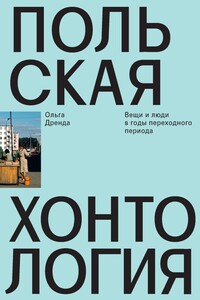
Книга антрополога Ольги Дренды посвящена исследованию визуальной повседневности эпохи польской «перестройки». Взяв за основу концепцию хонтологии (hauntology, от haunt – призрак и ontology – онтология), Ольга коллекционирует приметы ушедшего времени, от уличной моды до дизайна кассет из видеопроката, попутно очищая воспоминания своих респондентов как от ностальгического приукрашивания, так и от наслоений более позднего опыта, искажающих первоначальные образы. В основу книги легли интервью, записанные со свидетелями развала ПНР, а также богатый фотоархив, частично воспроизведенный в настоящем издании.
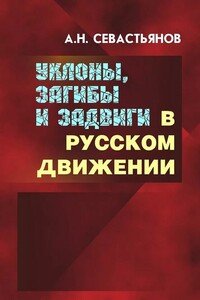
Перед Вами – сборник статей, посвящённых Русскому национальному движению – научное исследование, проведённое учёным, писателем, публицистом, социологом и политологом Александром Никитичем СЕВАСТЬЯНОВЫМ, выдвинувшимся за последние пятнадцать лет на роль главного выразителя и пропагандиста Русской национальной идеи. Для широкого круга читателей. НАУЧНОЕ ИЗДАНИЕ Рекомендовано для факультативного изучения студентам всех гуманитарных вузов Российской Федерации и стран СНГ.
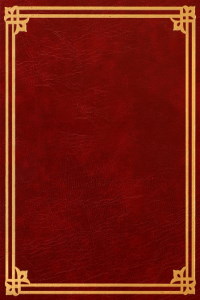
Эти заметки родились из размышлений над романом Леонида Леонова «Дорога на океан». Цель всего этого беглого обзора — продемонстрировать, что роман тридцатых годов приобретает глубину и становится интересным событием мысли, если рассматривать его в верной генеалогической перспективе. Роман Леонова «Дорога на Океан» в свете предпринятого исторического экскурса становится крайне интересной и оригинальной вехой в спорах о путях таксономизации человеческого присутствия средствами русского семиозиса. .

Д.и.н. Владимир Рафаилович Кабо — этнограф и историк первобытного общества, первобытной культуры и религии, специалист по истории и культуре аборигенов Австралии.